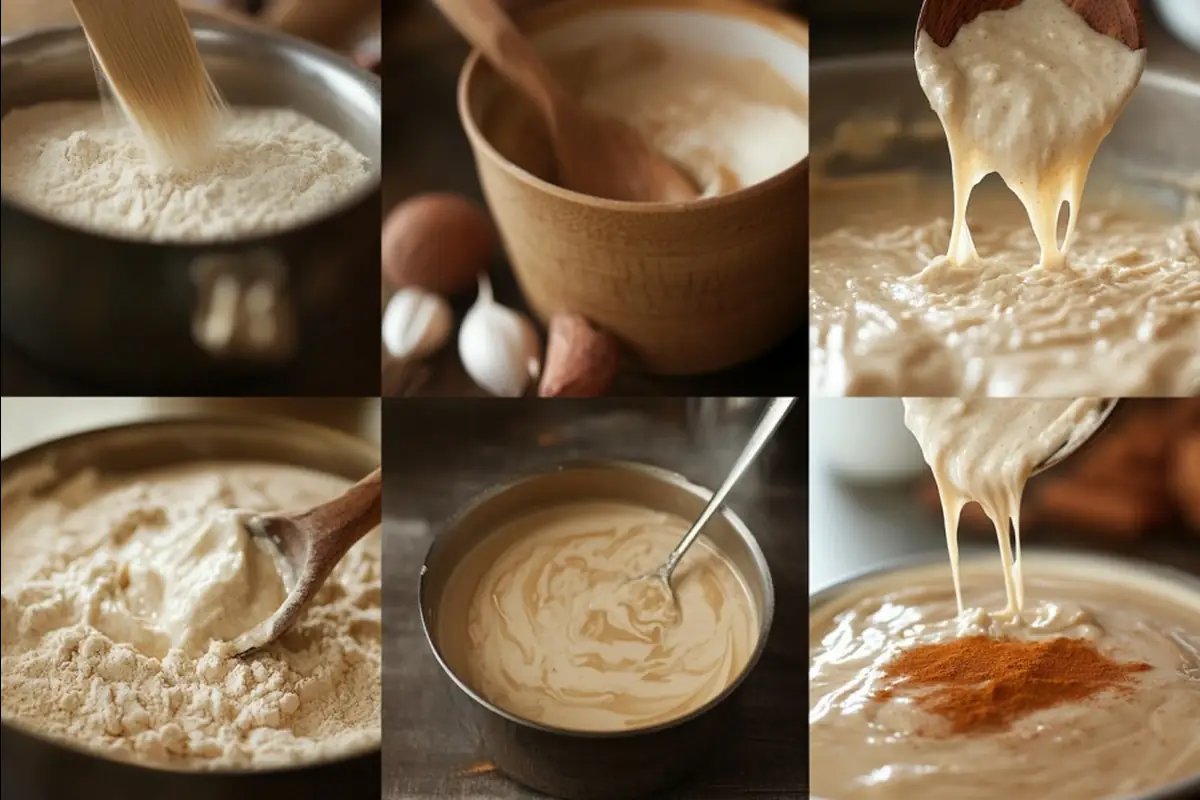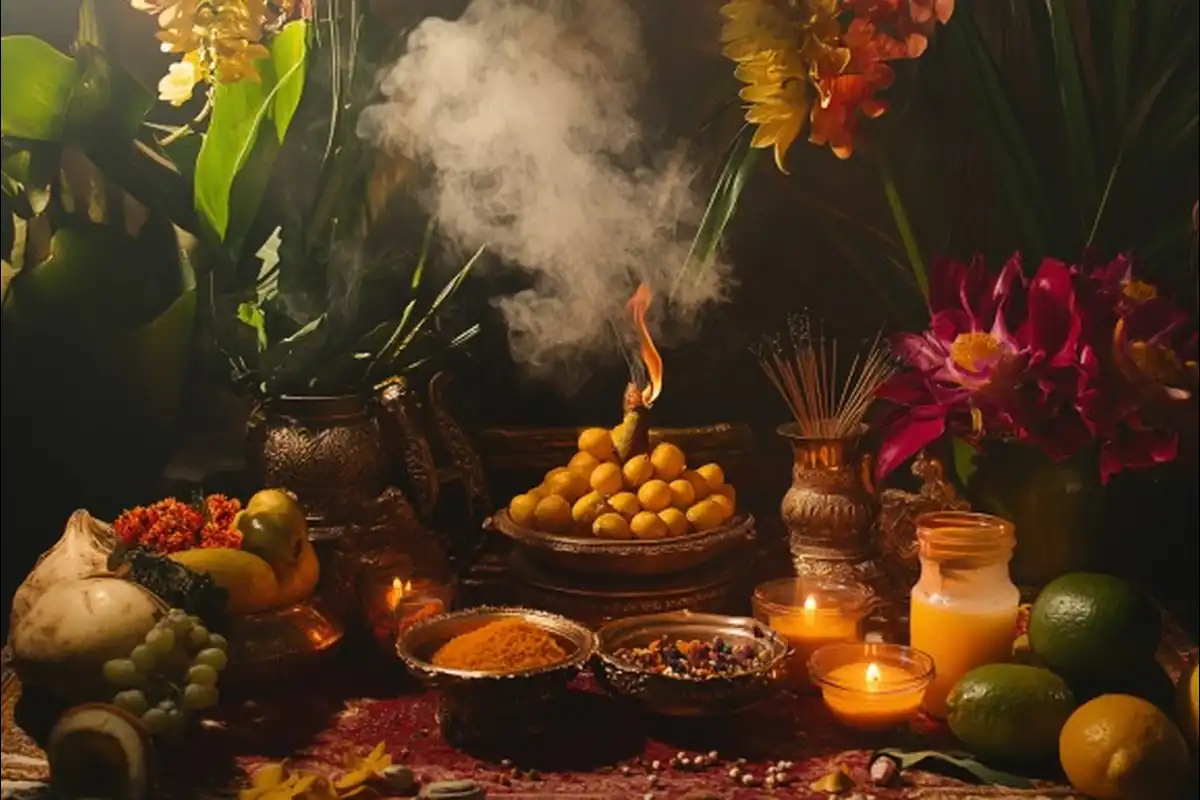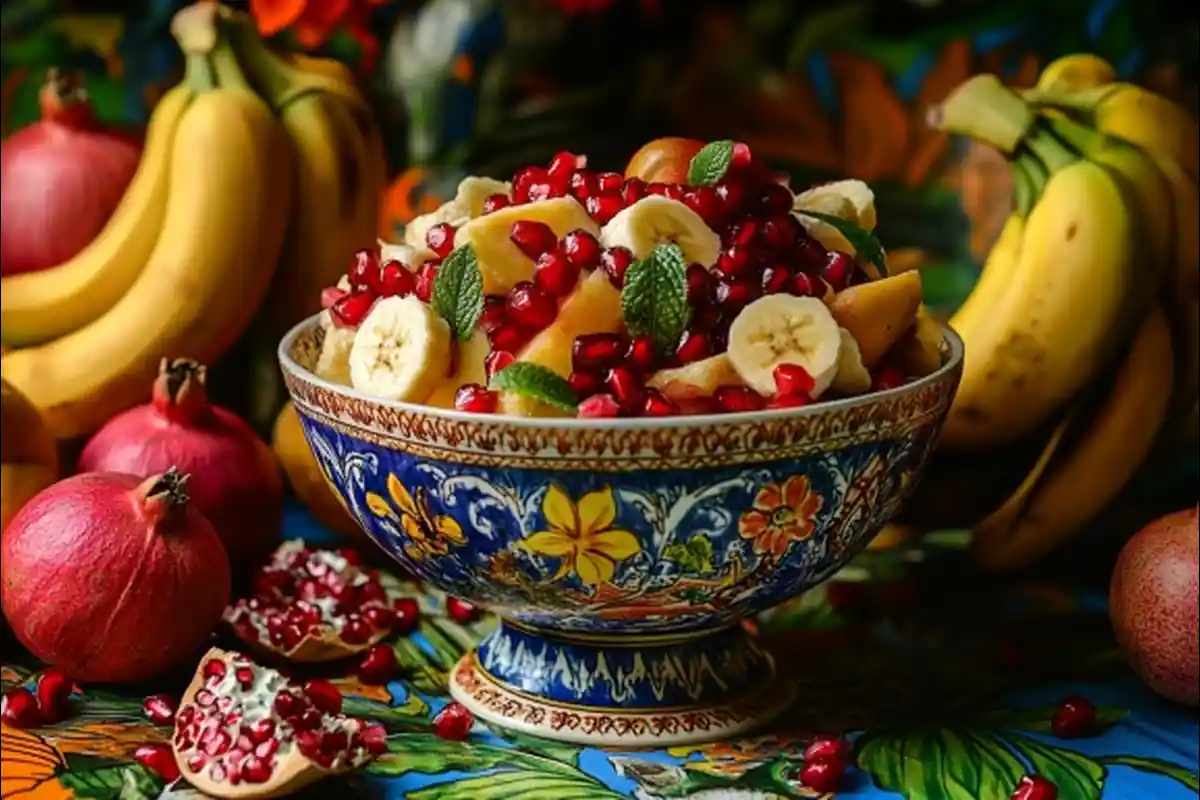What is Guyanese Parsad?
What is Guyanese Parsad? It’s much more than just a dessert; it’s a cherished cultural tradition, deeply rooted in rich flavors, history, and religious significance. Often enjoyed during Hindu festivals and Guyanese celebrations, this buttery and spiced delicacy offers a unique taste experience that resonates with nostalgia and reverence. From its roots in ceremonial offerings to its presence at festive gatherings, parsad is a symbol of togetherness and devotion.
In this article, we’ll dive deep into everything about Guyanese parsad. Therefore, from understanding its ingredients and preparation techniques to exploring its cultural significance, this guide will equip you with all the know-how to appreciate and even make this delightful dish. In addition, you’ll gain insights into its rich history and the special occasions where it takes center stage. Whether you’re new to parsad or reconnecting with your Guyanese roots, you’re in for a treat.
1: Introduction to Guyanese Parsad
Overview of Parsad in Guyanese Culture
At its core, Guyanese Parsad is a dish of simplicity and richness. Cooks traditionally use parched flour, ghee, milk, and sugar to make this dish, but the magic happens when these humble ingredients blend seamlessly to create something extraordinary. Parsad is not just food—it’s an experience. It has a melt-in-your-mouth texture, balanced sweetness, and warm, aromatic flavors from spices like cinnamon and cardamom.
In Guyanese households, people often associate parsad with special occasions. Families prepare it for Hindu religious ceremonies like pujas and offer it as a sacred treat.
But its appeal extends far beyond religious contexts; it’s a favorite during weddings, birthdays, and cultural festivals like Diwali.
Historical and Religious Significance of What is Guyanese Parsad?
The word parsad (or prasad) originates from Sanskrit, meaning “blessing” or “grace.” In Hindu tradition, prasad refers to food offered to deities during worship. After the ceremony, this blessed food is distributed among devotees as a token of divine grace. In Guyana, where Hindu culture blends with Caribbean influences, parsad has evolved into a distinctly local creation.
Why Parsad is a Staple in Celebrations
For many, parsad is a symbol of abundance and generosity. Its preparation is often a communal activity, bringing families together. The rich aroma of toasted flour and ghee wafting through the kitchen is a sensory memory for many Guyanese. Its presence on celebratory tables alongside fruits and other sweets underscores its role in marking joyous occasions.
2: Ingredients of Guyanese Parsad
The Essential Ingredients
To make Guyanese Parsad, you need a handful of simple yet rich ingredients. Flour, ghee (clarified butter), milk, and sugar are the building blocks of this dessert. Each of these elements plays a crucial role in achieving the dish’s unique taste and texture. Spices like cinnamon and cardamom are added for a warm, aromatic flavor, while raisins provide subtle bursts of sweetness. These ingredients come together harmoniously, creating a dish that’s both satisfying and memorable.
Variations in Ingredients
Depending on regional or family preferences, the ingredients for Guyanese Parsad can vary. While some recipes call for granulated sugar, others prefer the deeper flavor of Demerara or brown sugar. Whole milk is the traditional choice, but many modern recipes incorporate plant-based options like almond or coconut milk. Ghee, a staple in traditional recipes, can be substituted with unsalted butter for a slightly different flavor profile.
For those looking to add extra flair, ingredients like chopped nuts or maraschino cherries can be included. These optional additions not only enhance the dish’s taste but also add a festive touch, making it perfect for celebrations.
Substitutes for Common Ingredients
If you’re out of certain ingredients or prefer healthier alternatives, there are plenty of substitutions. Gluten-free flour can replace all-purpose flour for a celiac-friendly version. Similarly, condensed milk or evaporated milk can be used in place of regular milk and sugar, creating a creamier and richer version. For a vegan option, coconut oil can stand in for ghee, offering a distinct tropical flavor that complements the spices.
3: How to Make Guyanese Parsad
Step-by-Step Guide

- Preparing the Milk Mixture:
Start by heating milk with sugar, cinnamon sticks, cardamom pods, and raisins in a saucepan. Allow the mixture to simmer gently, infusing the milk with the flavors of the spices. - Parching the Flour:
In a separate large pot, melt ghee over medium heat. Gradually add sifted flour, stirring continuously to ensure it doesn’t burn. This step, known as “parching,” is crucial for achieving the characteristic nutty flavor of Guyanese Parsad. - Combining Ingredients:
Once the flour is golden brown and aromatic, slowly pour the hot milk mixture into the parched flour. Stir vigorously to prevent lumps from forming. Continue mixing until the mixture thickens and pulls away from the sides of the pot.
Pro Tips for Best Results
- Toast the Flour Thoroughly: Proper parching is key to achieving the desired depth of flavor. However, be careful not to scorch the flour, as it can ruin the dish.
- Use Fresh Spices: Whole cinnamon sticks and cardamom pods offer a fresher and more robust flavor compared to pre-ground spices.
- Adjust the Ghee: For a softer, creamier parsad, increase the amount of ghee slightly.
Common Mistakes to Avoid
- Adding cold milk directly to the hot flour mixture can lead to clumps. Always use warm or hot milk to ensure smooth consistency.
- Overcooking the flour can result in a bitter taste, so keep an eye on the heat and stir continuously.
4: Types of Parsad
Butter Parsad vs. Ghee Parsad
When exploring What is Guyanese Parsad?, it’s essential to understand its variations. The most common distinction lies in the type of fat used: butter or ghee. While both create a deliciously rich dessert, they impart slightly different flavors. Ghee-based parsad has a nutty, deeply aromatic profile that’s often preferred for traditional ceremonies. On the other hand, butter parsad has a milder, creamy taste, making it an excellent choice for those new to the dish.
Differences Between Guyanese and Indian Parsad
Guyanese parsad has its roots in Indian cuisine but has evolved uniquely within the Caribbean context. Indian parsad, often referred to as halwa or prasad, is traditionally made with semolina or wheat flour, sugar, and ghee. Guyanese parsad swaps semolina for all-purpose flour and incorporates milk, which gives it a softer, more melt-in-your-mouth texture. The addition of spices like cinnamon and raisins reflects the Caribbean’s cultural influences, adding a distinctive flair.
Gluten-Free and Other Modern Variations
With evolving dietary preferences, modern recipes for parsad have emerged. For a gluten-free option, almond or rice flour can replace all-purpose flour. Similarly, sweetened condensed milk or plant-based alternatives like coconut or almond milk can be used to adapt the recipe for dietary restrictions. These innovations maintain the dish’s essence while making it accessible to a broader audience.
5: Nutritional Insights
Calories and Macros
Guyanese Parsad is undeniably indulgent, but understanding its nutritional profile can help you enjoy it mindfully. A typical serving contains about 400 calories, with carbohydrates and fats forming the bulk of its macronutrient composition. While it’s not an everyday treat, its richness makes it perfect for special occasions.
Health Benefits of Ingredients Like Ghee and Spices
Interestingly, some ingredients in parsad offer health benefits. Ghee, for instance, is rich in healthy fats and vitamins A, E, and K, which support overall wellness. Spices like cinnamon and cardamom not only enhance the dish’s flavor but also provide antioxidant and anti-inflammatory properties. Raisins add natural sweetness and a touch of dietary fiber.
Looking for more comforting dessert recipes? For an exciting twist on classic sweets, explore the Traditional Parsad Recipe for another take on this cherished dish.
6: Cultural Importance of Parsad

Parsad in Hindu Poojas
What is Guyanese Parsad? To many, it’s not just a dessert—it’s a sacred offering. In Hindu poojas (ceremonial prayers), parsad holds deep religious significance. People prepare it as an offering to deities and bless it during rituals. Afterward, they share it among devotees as prasad, symbolizing divine grace and unity. Making parsad during a pooja often highlights devotion and spirituality, turning the process into a meaningful labor of love.
The careful preparation—using clean utensils, fresh ingredients, and pure ghee—underscores its sacred nature. The result is a dessert that is not only delicious but also infused with spiritual value, bringing people together in faith and community.
Parsad During Guyanese Celebrations
Beyond religious settings, Guyanese Parsad has become a beloved staple in social and festive gatherings. Whether it’s a wedding, a Diwali celebration, or a birthday, parsad often takes center stage. It is shared generously, symbolizing goodwill, prosperity, and togetherness.
In Guyana, parsad is also a nostalgic comfort food, evoking fond memories of family gatherings and celebrations. Its smooth, buttery texture and warm, spiced aroma create a sense of belonging, making it a dish cherished by generations.
7: FAQs
What is Guyana’s Most Famous Food?
While Guyanese Parsad is a standout dessert, Guyanese cuisine boasts a rich array of famous dishes. Roti, curry, and pepperpot are beloved staples that showcase the country’s cultural diversity. Among desserts, parsad stands out for its unique flavor and cultural roots.
What is Parsad in Trinidad vs. Guyana?
Parsad in Trinidad and Guyana share many similarities but also reflect regional influences. In Trinidad, parsad often includes a mix of flour and cream of wheat, offering a slightly coarser texture. Guyanese Parsad, in contrast, uses parched flour for a smoother, creamier finish. Both versions, however, honor the dish’s Indian origins and Caribbean adaptations.
What’s the Best Guyanese Butter Parsad Recipe?
The best recipe depends on your preferences! For a classic Guyanese butter parsad, start with equal parts flour and ghee, sweetened with sugar, and infused with warm spices like cinnamon and cardamom. Don’t forget the raisins for added sweetness. Need more tips? Check out our guide on crafting authentic Guyanese desserts.
How Does Parsad Compare to Punjabi Halwa?
While both dishes are made with flour, butter (or ghee), and sugar, Punjabi halwa uses semolina and often includes more robust spicing. Parsad’s smoother texture and mild sweetness make it distinct, offering a Caribbean take on this classic Indian dessert.
9: Conclusion and Final Thoughts
Recap of Parsad’s Importance
In answering What is Guyanese Parsad?, we’ve uncovered its multifaceted identity. Parsad is more than a dessert—it’s a cultural treasure, a symbol of devotion, and a source of joy during celebrations. Its unique blend of flavors and textures reflects the rich tapestry of Guyanese traditions, bringing warmth and nostalgia to every bite.
From its sacred role in Hindu ceremonies to its place at weddings and festivals, parsad continues to unite families and communities. It’s a dish that transcends borders, offering a taste of Guyana’s history and cultural diversity.
Encouragement to Try the Recipe
Whether you’re looking to reconnect with your roots or simply explore new flavors, making parsad at home is a rewarding experience. With just a few ingredients and some patience, you can create this iconic dessert and enjoy its buttery, spiced goodness. Don’t hesitate—give it a try, and let this cherished tradition add sweetness to your table.
For more dessert inspirations, check out Traditional Parsad Recipe and discover other delightful Guyanese dishes. Now that you know What is Guyanese Parsad?, it’s time to experience its magic firsthand!


2 thoughts on “What is Guyanese Parsad? A Cultural and Culinary Delight”